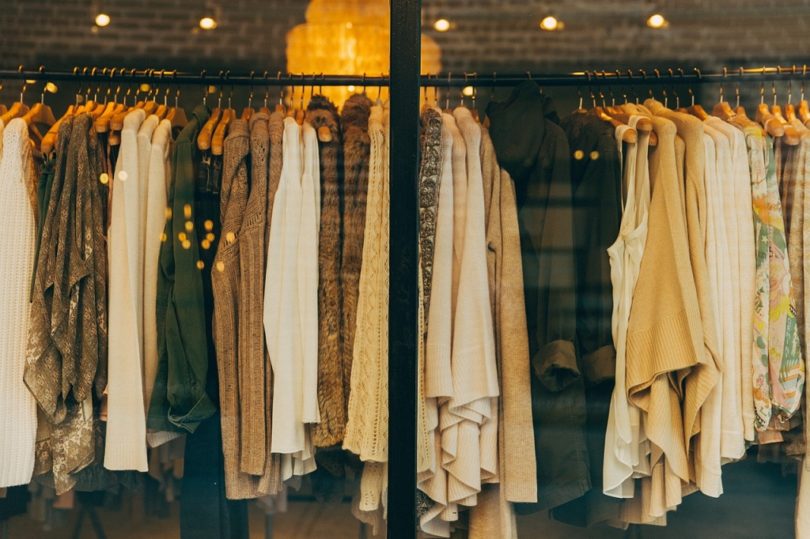Exploring the World of Lasting Boutique Fashion Brands
Exploring the World of Lasting Boutique Fashion Brands
Blog Article
A Deep Study the Globe of High-Fashion Runways: Comprehending Clothes as Art
Developers, a lot like skillful artists, weave complex narratives via type, textile, and color, testing traditional standards and redefining charm requirements. As we check out these sartorial eyeglasses, we must contemplate: what duty does fashion play in shaping social values, and how does it mirror the ever-changing tapestry of human feeling and identity?
The Development of Runway Reveals
The trajectory of runway shows has actually changed substantially over the years, evolving from unique industry events to captivating spectacles that blend style with art. Generally, runway programs were intimate affairs, kept in ateliers or small locations, mainly participated in by purchasers and sector experts. These early discussions concentrated on the garments' craftsmanship and industrial viability, providing a direct and practical display of seasonal collections.
As the fashion business broadened, the nature of path programs began to alter. The 1970s and 1980s noted a turning point, with developers seeking to identify themselves with more staged presentations. This period saw the increase of fancy sets, choreographed designs, and thematic narratives, proclaiming a brand-new age where the runway ended up being an experiential system. The programs changed into a form of storytelling, where each collection communicated a distinctive narrative or concept.
Over the last few years, modern technology and social media have actually better transformed path programs, making them easily accessible to an international audience. Livestreaming and electronic platforms have actually democratized fashion, enabling enthusiasts worldwide to witness these events in real-time (boutique fashion). This evolution shows a broader cultural change, where high-fashion runways work as a vibrant junction of advancement, design, and performance
Designers as Dreamer Artists
Designers in the high-fashion market have actually obscured the lines between useful garment production and the conceptual realm of art. By accepting creative disciplines such as sculpture, painting, and progressive setups, designers craft garments that challenge standard fashion norms and raise them to art types.
Visionary developers attract inspiration from a myriad of resources, including abstract art, historical referrals, and personal stories. They have an one-of-a-kind capacity to picture and materialize ideas that press the limits of traditional style, commonly redefining visual paradigms in the procedure. This imaginative ingenuity is showcased through significant silhouettes, cutting-edge products, and elaborate craftsmanship, which invite customers to experience style as more than just wearable products.
Moreover, the runway functions as a canvas for these artists, where illumination, music, and set style coalesce to develop immersive experiences. These presentations are not simply display screens of clothes however are orchestrated efficiencies that evoke feeling and provoke thought, attesting the developer's role as a true musician in the contemporary social landscape.
Cultural Impacts in Style
Cultural tapestry weaves its detailed patterns right into the material of style, affecting designers internationally. The dynamic interchange of social stories, practices, and icons informs and inspires collections that elegance high-fashion paths.
The impact of society on fashion is often seen in the reinterpretation of typical garments and patterns. For circumstances, using Japanese robes, Indian saris, or African prints in contemporary fashion mirrors a mix of social authenticity and modern visual appeals. Designers such as Valentino's Pierpaolo Piccioli and Alexander McQueen's Sarah Burton have been recognized to integrate rich cultural concepts right into their couture collections, converting history into wearable art.

Advancement in Textile and Design
Technology in fabric and layout constantly improves the landscape of high-fashion, pressing boundaries and redefining opportunities. Developers are progressively discovering the assimilation of modern technology, such as 3D printing, which permits for the production useful link of complicated structures that were formerly unthinkable.
Additionally, sustainability has come to be an essential theme in textile advancement. The fashion business is experiencing a surge in making use of green products, stemmed from recycled plastics, organic fibers, and even naturally degradable parts. These advancements not just provide brand-new appearances and appearances yet likewise address critical ecological problems. Designers are accepting these materials to craft garments that are both visually striking and mindful of their ecological impact.
In regards to layout, speculative types and avant-garde silhouettes are constantly transforming the runway. By including unique materials and innovative strategies, developers grow garments that blur the line between fashion and art, setting brand-new criteria for creative thinking and expression in the high-fashion sphere.
Impact of Fashion on Society
Style possesses a profound influence on culture, offering as both a reflection of cultural identification and a driver for social change (boutique fashion). Via its development, fashion has actually mirrored societal changes, enveloping the zeitgeist of various eras.
Additionally, fashion has the power to bridge cultural gaps, fostering understanding and admiration amongst varied teams. As globalisation increases, the cross-cultural exchange of style concepts comes to be progressively considerable, advertising inclusivity and variety. The surge of streetwear, stemming from city subcultures, highlights how style can go beyond socio-economic limits, giving individuals a way of self-expression and empowerment.
Fundamentally, fashion is not just regarding aesthetic appeals; it is a vibrant force that influences worths, mindsets, and societal development (boutique fashion). By constantly interacting with social and social currents, fashion continues to be an essential part of the cumulative human experience

Verdict
Developers, comparable to visionary musicians, manage collections that show identity, emotion, and social stories, testing typical looks. This intersection of style and view publisher site virtuosity not just mesmerizes audiences worldwide but additionally affects societal perceptions and advertises a much deeper recognition for cultural diversity.

Social tapestry weaves its elaborate patterns right into the textile of fashion, affecting designers around the world.Fashion wields an extensive influence on society, serving as both a representation of social identification and a stimulant for social adjustment.
Report this page